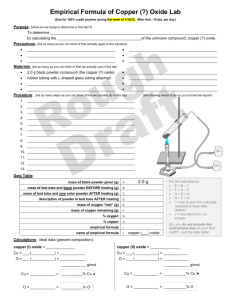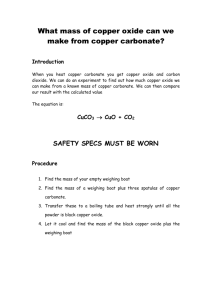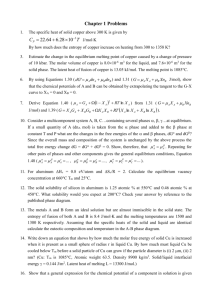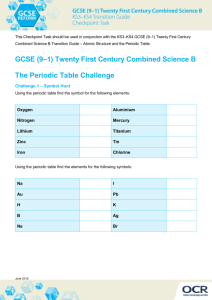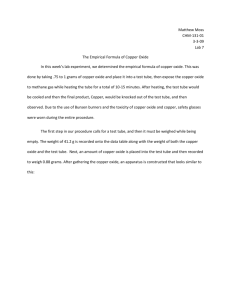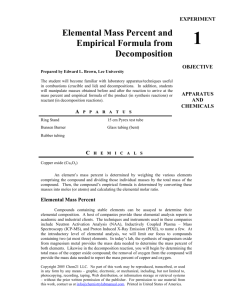Purpose: To decompose an oxide of copper into pure
advertisement
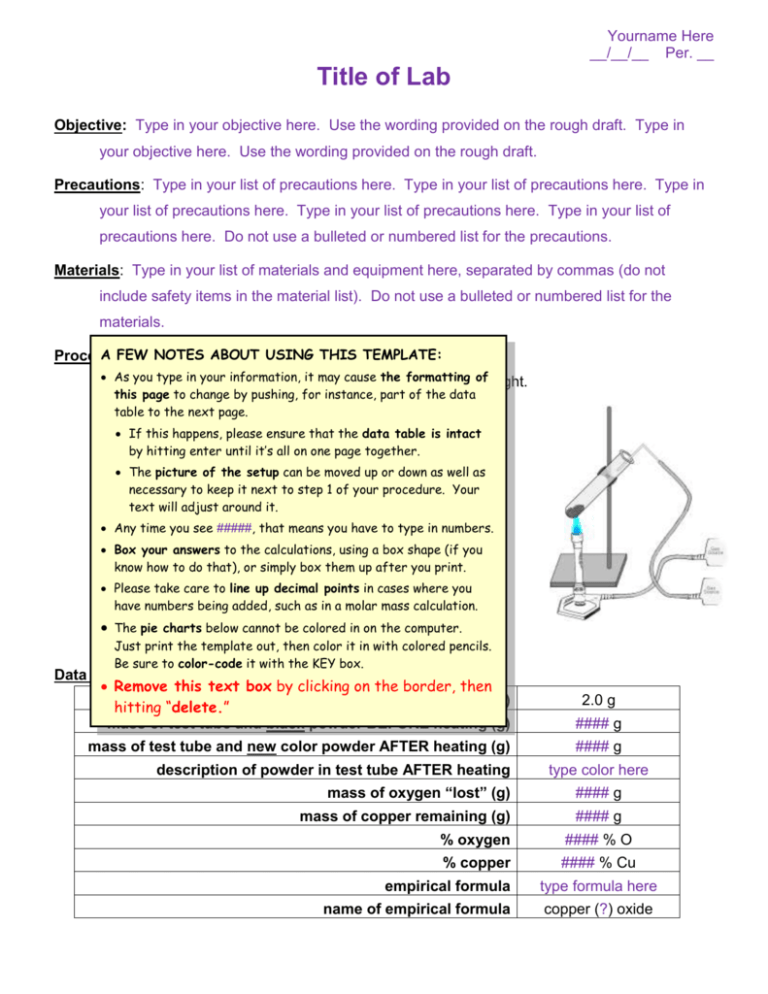
Yourname Here __/__/__ Per. __ Title of Lab Objective: Type in your objective here. Use the wording provided on the rough draft. Type in your objective here. Use the wording provided on the rough draft. Precautions: Type in your list of precautions here. Type in your list of precautions here. Type in your list of precautions here. Type in your list of precautions here. Type in your list of precautions here. Do not use a bulleted or numbered list for the precautions. Materials: Type in your list of materials and equipment here, separated by commas (do not include safety items in the material list). Do not use a bulleted or numbered list for the materials. A FEW NOTES ABOUT USING THIS TEMPLATE: Procedure: 1.AsAssemble you type inthe yourmaterials information, may cause the formatting of as it shown in the diagram to the this page to change by pushing, for instance, part of the data 2.table Type here. to in thestep next2page. right. If thisinhappens, please ensure that the data table is intact 3. Type step 3 here. by hitting enter until it’s all on one page together. 4. Type in step 4 here. The picture of the setup can be moved up or down as well as 5. Type in step 5 here. necessary to keep it next to step 1 of your procedure. Your text will adjust around 6. Type in step 6 here. it. Any time you see #####, that means you have to type in numbers. 7. Type in step 7 here. Box your answers to the calculations, using a box shape (if you 8.know Type intostep 8 here. how do that), or simply box them up after you print. 9.Please care 9tohere. line up decimal points in cases where you Typetake in step have numbers being added, such as in a molar mass calculation. 10. Type in step 10 here. The pie charts below cannot be colored in on the computer. 11. Type in the steptemplate 11 here. ascolored necessary. Just print out,Add/delete then color itsteps in with pencils. Be sure to color-code it with the KEY box. Data Table: Remove this text box by clicking on the border, then mass of black powder given (g) hitting “delete.” mass of test tube and black powder BEFORE heating (g) #### g mass of test tube and new color powder AFTER heating (g) #### g description of powder in test tube AFTER heating 2.0 g type color here mass of oxygen “lost” (g) #### g mass of copper remaining (g) #### g % oxygen #### % O % copper #### % Cu empirical formula type formula here name of empirical formula copper (?) oxide Calculations: ideal data: copper (I) oxide = type formula here copper (II) oxide = type formula here Cu = # (63.55) = ##### O = # (16.00) = ##### ##### g/mol Cu = # (63.55) = ##### O = # (16.00) = ##### ##### g/mol Cu = ###### = ##### % Cu ###### Cu = ###### = ##### % Cu ###### O = ###### = ##### % O ###### O = ###### = ##### % O ###### Calculations: experimental data: Experimental Percent Composition: Experimental Empirical Formula: ### g Cu = ##### % Cu 2.0 g total ##### g Cu 1 mol Cu = ###### mol Cu = # mol Cu 63.55 g Cu ###### ##### g O ### g O = ##### % O 2.0 g total 1 mol O 16.00 g O = ###### mol O = # mol O ###### Difference between the Experimental Percent Composition and the Ideal Percent Compositions: #####% Cu in copper (I) oxide – #####% Cu experimentally #####% difference #####% Cu in copper (II) oxide – #####% Cu experimentally #####% difference Graphs: KEY = Cu =O Ideal copper (I) oxide Experimental copper (?) oxide Ideal copper (II) oxide Conclusion: The compound that was decomposed in the test tube was type the formula, copper (?) oxide, because the percentages calculated from the actual data more closely match the ideal percentages of type the formula (a difference of ##### %) than they do the ideal percentages of type the OTHER formula (a difference of ##### %). Questions: 1. Type in your answer to question #1 here (use full sentences—incorporate the question into your answer). 2. Type in your answer to question #2 here (use full sentences—incorporate the question into your answer). 3. Continue typing in full sentence answers to ALL questions.
